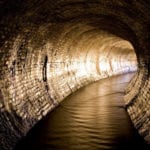 Books
Books  Books
Books  Humans
Humans 10 of the World’s Toughest Puzzles Solved in Record Time
 Mysteries
Mysteries 10 Scientific Mysteries We Don’t Fully Understand
 Weird Stuff
Weird Stuff 10 Celebrities Who Have Admitted to Alien Encounters
 Our World
Our World 10 Surprising Secrets of Notre Dame Cathedral
 Miscellaneous
Miscellaneous 10 Intriguing Origins of Popular Carnival Rides
 Weird Stuff
Weird Stuff Ten Unexpected Discoveries Involving Vomit
 Movies and TV
Movies and TV 10 Actors Who Almost Didn’t Take Career-Defining Roles
 Technology
Technology 10 Little-Known Shifts in Computer Science
 Religion
Religion 10 Catholic Histories That Reveal Acceptance of Abortion and Contraception
 Books
Books 10 Famous Writers Who Were Hypocritical
 Humans
Humans 10 of the World’s Toughest Puzzles Solved in Record Time
 Mysteries
Mysteries 10 Scientific Mysteries We Don’t Fully Understand
Who's Behind Listverse?

Jamie Frater
Head Editor
Jamie founded Listverse due to an insatiable desire to share fascinating, obscure, and bizarre facts. He has been a guest speaker on numerous national radio and television stations and is a five time published author.
More About Us Weird Stuff
Weird Stuff 10 Celebrities Who Have Admitted to Alien Encounters
 Our World
Our World 10 Surprising Secrets of Notre Dame Cathedral
 Miscellaneous
Miscellaneous 10 Intriguing Origins of Popular Carnival Rides
 Weird Stuff
Weird Stuff Ten Unexpected Discoveries Involving Vomit
 Movies and TV
Movies and TV 10 Actors Who Almost Didn’t Take Career-Defining Roles
 Technology
Technology 10 Little-Known Shifts in Computer Science
 Religion
Religion 10 Catholic Histories That Reveal Acceptance of Abortion and Contraception
Top 10 Secret Tunnels And Underground Passageways In Ireland
Not all tunnels are created equal, especially in Ireland where robbers, explorers, and the elite of society used them to avoid being seen.
Many underground passageways were mere legends before being unearthed in the last century. Others were completely unknown and revealed mysteries that still confound archaeologists and explorers alike.
Which tunnel would you most like to explore?
10 Haunted Tunnels With Really Creepy Backstories
10 When You Gotta Go
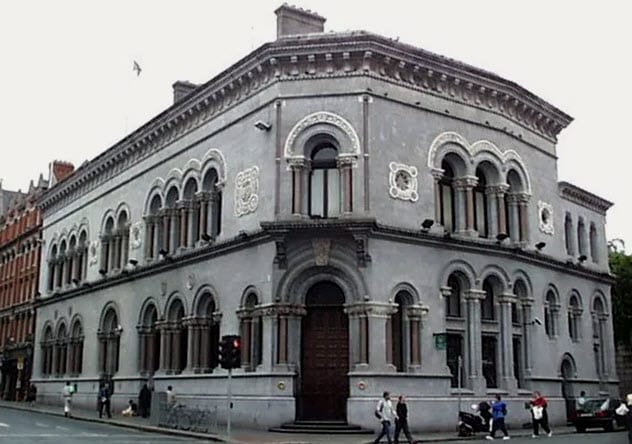
In 1985, a gang of bank robbers decided to dig a tunnel to Dublin’s Allied Irish Bank on Dame Street. However, when they came up for air, they found themselves in a ladies’ restroom instead.
The raiders began their underground escapade outside Dublin Castle, which was right beside the city’s main police communications center. They started on the Thursday before Easter and finished the tunnel on Easter Monday.
The gang built a 23-meter (75 ft) tunnel to the bank’s wall. By accidentally entering the restroom, they set off an alarm that warned police of their whereabouts on that long Easter holiday weekend.
After all that trouble, the miscreants were forced to flee without the loot. But even if they had succeeded, it wouldn’t have been that lucrative. Supposedly, the vault only had about $147,000 on hand. Even so, a bank spokesman didn’t believe that the would-be thieves could have pierced the strong room where the money was kept.[1]
9 Staircase Tunnel Discovered In Cork After 230 Years
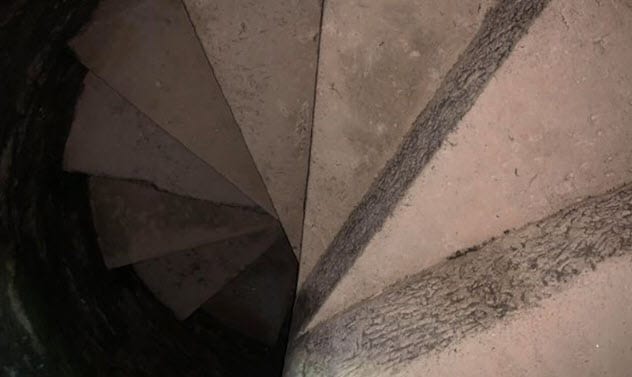
Although Spike Island in Cork Harbour was once used as a prison and a defensive structure, it is now a popular tourist attraction. Originally a monastic settlement from the seventh century, the island may have been used as a smugglers’ port in the 1600s, too.
The first artillery fortification was built there in 1779 as a result of the American Revolutionary War. The island was also a port for Britain to supply goods to its forces in North America and the West Indies. In 1790, the first permanent fort was built on Spike Island by the Irish Board of Ordnance.
In August 2020, a tunnel was found after a wall was removed that had blocked the underground passage for decades. The tunnel, which runs under the walls of the fort, is called a “sally port.”
A sally port is a small exit or entryway. It is usually protected with a wall or door that must be circumvented to gain entry and that protects against enemy fire from a great distance. After the door to the tunnel was opened, the staff found a spiral staircase that seemed to float like something out of the Harry Potter stories.
The rediscovered tunnel at Spike island leads out to the moat from the inner fort. A second fort was built on the island in the early 1800s. So it’s likely that the tunnel was blocked off because it was made redundant by the newer construction.[2]
8 Frescati Stream
Blackrock, Dublin
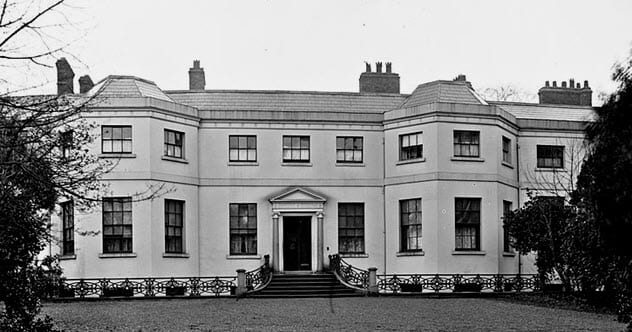
A tunnel ran under the grounds of the Frescati House where the family of the Trinity College provost lived in 1739. The passageway was built by a later owner—Emily FitzGerald, Duchess of Leinster—to bring seawater to the estate. However, the tunnel is now blocked off. In fact, the exact location of the structure remains a mystery.
In the 20th century, the Frescati House was demolished and the estate was redeveloped into a shopping center. But the Frescati Stream (aka Priory Stream) remains beneath the shopping center car park. From there, the stream visibly passes an apartment complex, ducks under the main road, and ultimately emerges at Blackrock Park.
In earlier times, the course of the stream may have been used by residents to escape raids by the Crown Militia from Dublin Castle.[3]
7 The Goggins Hill Tunnel
County Cork
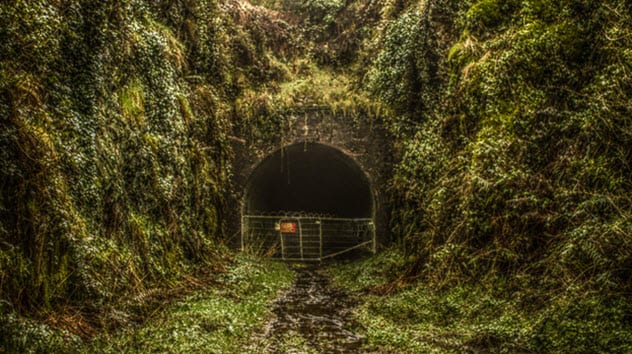
Since its closing in 1961, the Goggins Hill (also spelled “Gogginshill”) Tunnel has been Ireland’s longest abandoned tunnel at 828 meters (2,717 ft). Once used as a railway passage, it was carved out by 300 men under the village of Ballinhassig in 1850–51.
The area is overgrown and spooky now, looking very much like a tunnel to the underworld. It has three ventilation shafts. Some sections are hewed from the original rock, while others are lined with bricks to prevent collapses.
For any would-be explorers reading this, be warned that the tunnel is on private land and permission to explore should be asked of the current owner. Trespassers are not welcomed. But with permission, visitors will be allowed entrance.[4]
6 The Ballymore Tunnel, County Kildare, And Casino Marino, Dublin

In 1852, the Ards estate was inhabited by Lady Isabella Tasca Stewart-Bam, a well-to-do and pious woman. She commissioned the construction of the Ballymore tunnel so that she could walk to church without being seen by the nearby peasants.
In the same vein, a tunnel was built at Casino Marino in Dublin so that servants could travel between the main house and the garden without spoiling the view. In the 18th century, the Casino was a pleasure house for James Caulfeild, 1st Earl of Charlemont. The house had eight tunnels leading from it.
It’s possible that the Earl of Charlemont wanted the tunnels to run all the way to the sea. However, as he ran out of money and died before that happened, their purpose will remain a mystery.[5]
In 2016, secret tunnels discovered beneath the grounds surrounding Casino Marino were opened to the public. These passageways were used by Irish soldier and revolutionary politician Michael Collins and others to test-fire submachine guns during the Irish War of Independence in the early 1900s.
Top 10 Ingenious Features Of The Cu Chi Tunnels
5 1,000-Year-Old Souterrain Discovered In County Cork

In 2015, workers discovered an underground passageway in the Caha Mountains in County Cork that had been dug through solid rock about 1,000 years ago. This passage is called a “souterrain,” which comes from the French word sous-terrain meaning “underground passageway.”
Archaeologists believe that the idea of a souterrain was brought to Ireland from Gaul in the late Iron Age. Souterrains are associated with settlements and usually found near ringforts.
The workers discovered the tunnel while excavating to widen a tourist road in Bonane. The Caha Mountains in Cork stirred little archaeological interest until then, although they were known to have traces of Neolithic settlements.[6]
4 Sinkhole In Dublin Reveals Brothel Tunnel For Politicians

In 2015, a sinkhole opened up in one of Dublin’s main streets. Dame Street leads toward Trinity College Dublin and up to Christ Church Cathedral. The 1.8-meter-deep (6 ft) hole collapsed into an old cellar under the road.
According to historian Gerry Cooley, Irish politicians were believed to have sneaked through a tunnel in the 19th century to access brothels. This cellar may be a piece of that tunnel. It was probably used until the building for the Irish Parliament House became the Bank of Ireland in College Green after the Act of Union in 1800.[7]
3 Underground Jail Cells
County Meath
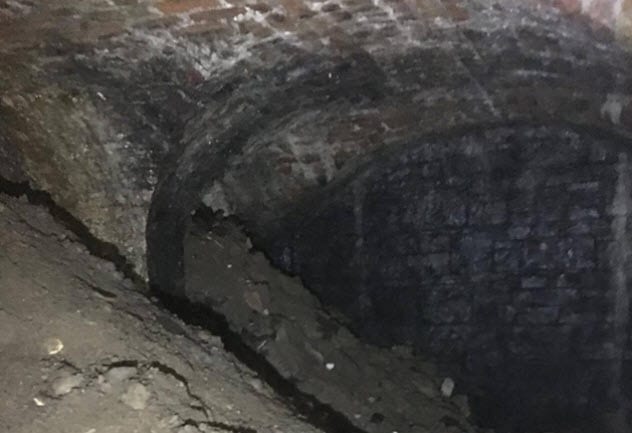
A secondary school in Trim, County Meath, was being renovated when jail cells were unearthed in underground tunnels. The cells were found intact after a wall was pulled down under the school.
The school had been built near the site of the old Trim Gaol (jail) that was demolished in the 1950s. Initially, the industrial school was set up to prevent pauper children from going to the workhouses by educating them in a trade instead.
Some strange deaths are associated with the site. In 1912, a teacher was murdered in the schoolyard by boys with sticks and brushes. Forty years later, two men died in a fall when the jail was destroyed. The men were placing explosives on the third floor to demolish the building when a wall came down on top of them and sent them plunging to the basement.[8]
2 River Poddle
Dublin
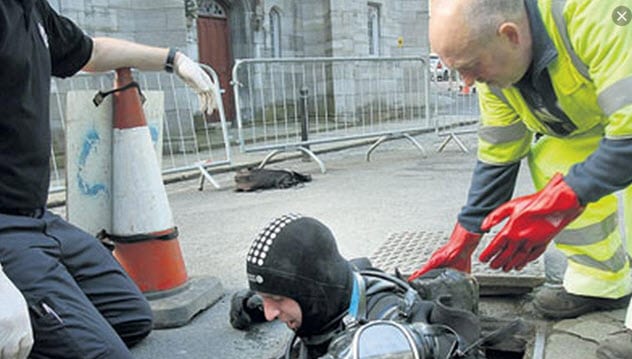
The River Poddle runs beneath Dublin Castle through the city center and toward Wellington Quay where it flows into the River Liffey. There are passageways to the Poddle that can be accessed by opening manhole covers and dropping into the water.
This is exactly what two men decided to do in 2012. They were caught on CCTV wearing waterproof clothing and gloves outside Dublin Castle. The Garda (Irish police) sub-aqua unit searched for the two men. But they couldn’t be found even though their voices were audible when the manhole cover was lifted.
Gardai thought that the men might be urban explorers scouting the tunnels, but others wondered if they could be searching for treasure. The waterways pass close to the Assay Office that holds gold and silver, and the Poddle Tunnel also goes beneath the Central Bank on Dame Street. As of this writing, nobody has identified the two men caught on camera in 2012.[9]
1 The Streets Under Limerick
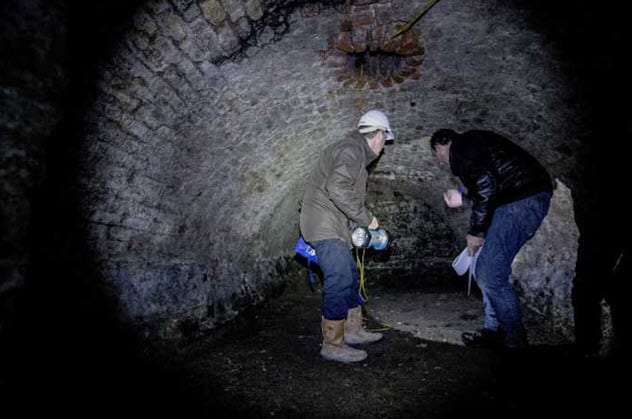
In the early 20th century, Limerick’s aboveground streets were renamed after the Irish Free State was established. Beneath every renamed street, however, lies a sewer with its original English name. For example, when you walk down O’Connell Street, you are directly above George’s Street (which was named after King George III).[10]
Supposedly, it was once possible to walk from one side of Limerick to the other completely underground. However, many of the underground tunnels have been concreted over and only some can be found today.
Many holes in the tunnel ceilings show where coal was delivered into bunkers under the aboveground streets. At the time, the tunnels were connected to sewers and drained away rainwater. They must have been quite unpleasant to walk in.
10 Bone-Chilling Facts About The Catacombs Of Paris
About The Author: Alexa still lives in Ireland and will do so until the money runs out.


